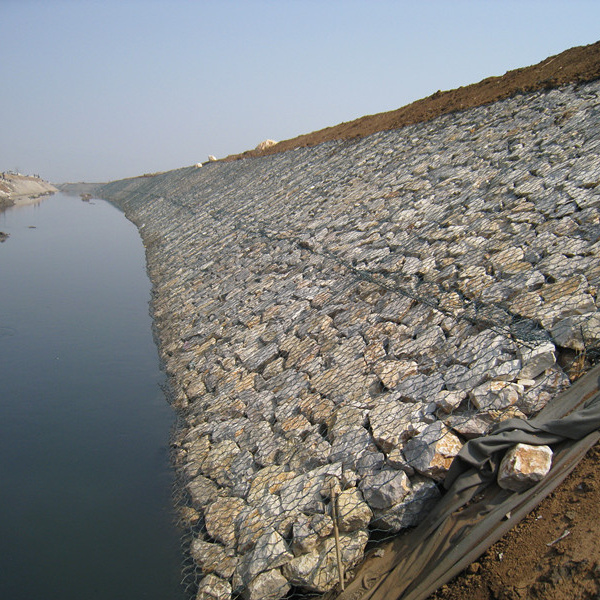Lis . 08, 2024 22:25 Back to list
Optimal Design for Gabion Drop Structures in Water Management Applications
Best Gabion Drop Structure An Effective Solution for Erosion Control
In the realm of civil engineering and environmental management, gabion drop structures have emerged as an innovative solution for controlling erosion, managing water flow, and enhancing riverbank stabilization. These structures, made of wire mesh baskets filled with rocks, serve multiple purposes ranging from flood control to habitat enhancement. In this article, we will explore the benefits and best practices associated with gabion drop structures.
Understanding Gabion Drop Structures
Gabion drop structures are engineered installations placed in natural or artificial channels designed to reduce the speed of flowing water, thereby minimizing erosion and sediment displacement. Typically, these structures consist of stackable wire baskets filled with a variety of materials, primarily stone or gravel, that provide a durable barrier against the kinetic energy of flowing water.
The design allows for a gradual drop in elevation, which helps dissipate energy and reduce turbulence in the water flow. When implemented correctly, gabion drop structures can stabilize stream banks and protect surrounding infrastructures such as roads, bridges, and buildings from erosion-induced damage.
Advantages of Gabion Drop Structures
1. Erosion Control One of the primary benefits of using gabion drop structures is their effectiveness in controlling erosion. By reducing water velocity, they help maintain the integrity of riverbanks and shorelines, preventing costly erosion and sediment loss.
2. Cost-Effectiveness Compared to traditional concrete structures, gabion drop structures can be more economical. The materials used, such as local stone, often reduce the need for transportation costs. Furthermore, their construction can often be completed more quickly than other types of structures.
3. Environmental Integration Gabions can blend seamlessly into their natural surroundings. Unlike rigid concrete solutions, gabion structures promote vegetation growth and habitat restoration by allowing water to permeate through the stones. This ecological advantage contributes to better biodiversity along water channels.
4. Sustainability Since gabion drop structures primarily use natural materials, they contribute to sustainable engineering practices. When filled with locally sourced rock or recycled materials, they significantly reduce the carbon footprint associated with their production and installation.
best gabion drop structure

5. Adaptability Gabion structures can be designed in various shapes and sizes, which makes them highly adaptable to different geographical landscapes and water flow conditions. This flexibility allows engineers to develop tailored solutions for specific sites.
Best Practices for Implementation
To ensure the effectiveness of gabion drop structures, several best practices should be followed
1. Site Assessment Conduct a thorough evaluation of the river or stream to understand the water flow patterns, soil types, and existing vegetation. This assessment is crucial for designing a structure that caters to local conditions.
2. Proper Design Engineers should follow guidelines for sizing and positioning gabion baskets to ensure they can effectively dissipate energy. The height and placement of the drop structure should be determined based on the anticipated water flow and potential flood conditions.
3. Quality Materials Use high-quality wire mesh and durable rock materials to ensure that the gabion structures withstand environmental wear and tear. Rust-resistant materials are vital for enhancing the longevity of the structures.
4. Regular Maintenance Periodic inspections and maintenance are essential for detecting any signs of wear or failure. Clearing debris and ensuring proper vegetation growth will help maintain the structural integrity and functionality of the gabions.
5. Community Involvement Engaging local communities in the design and maintenance processes can foster a sense of ownership and responsibility, ensuring better results in environmental conservation efforts.
Conclusion
Gabion drop structures offer a robust, environmentally friendly solution for erosion control and water flow management. Their adaptability, cost-effectiveness, and ease of integration into natural landscapes make them an attractive choice for engineers and environmentalists alike. By adhering to best practices in design and implementation, these structures can help protect ecosystems, infrastructure, and communities from the detrimental effects of erosion. As we face increasing environmental challenges, embracing innovative solutions like gabion drop structures will certainly play a critical role in future sustainable engineering endeavors.
-
hesco-gabion-baskets-for-coastal-erosion-prevention
NewsAug.22,2025
-
longevity-and-durability-of-river-rock-gabion-walls
NewsAug.22,2025
-
how-to-integrate-gabion-3d-walls-in-urban-planning
NewsAug.22,2025
-
reno-mattress-gabion-applications-in-civil-engineering
NewsAug.22,2025
-
how-to-install-wire-mesh-for-gabion-baskets-properly
NewsAug.22,2025
-
best-materials-for-filling-a-chain-link-gabion
NewsAug.22,2025
-
Wire Mesh Thickness Impact on Gabion Wall Load Bearing
NewsAug.12,2025






